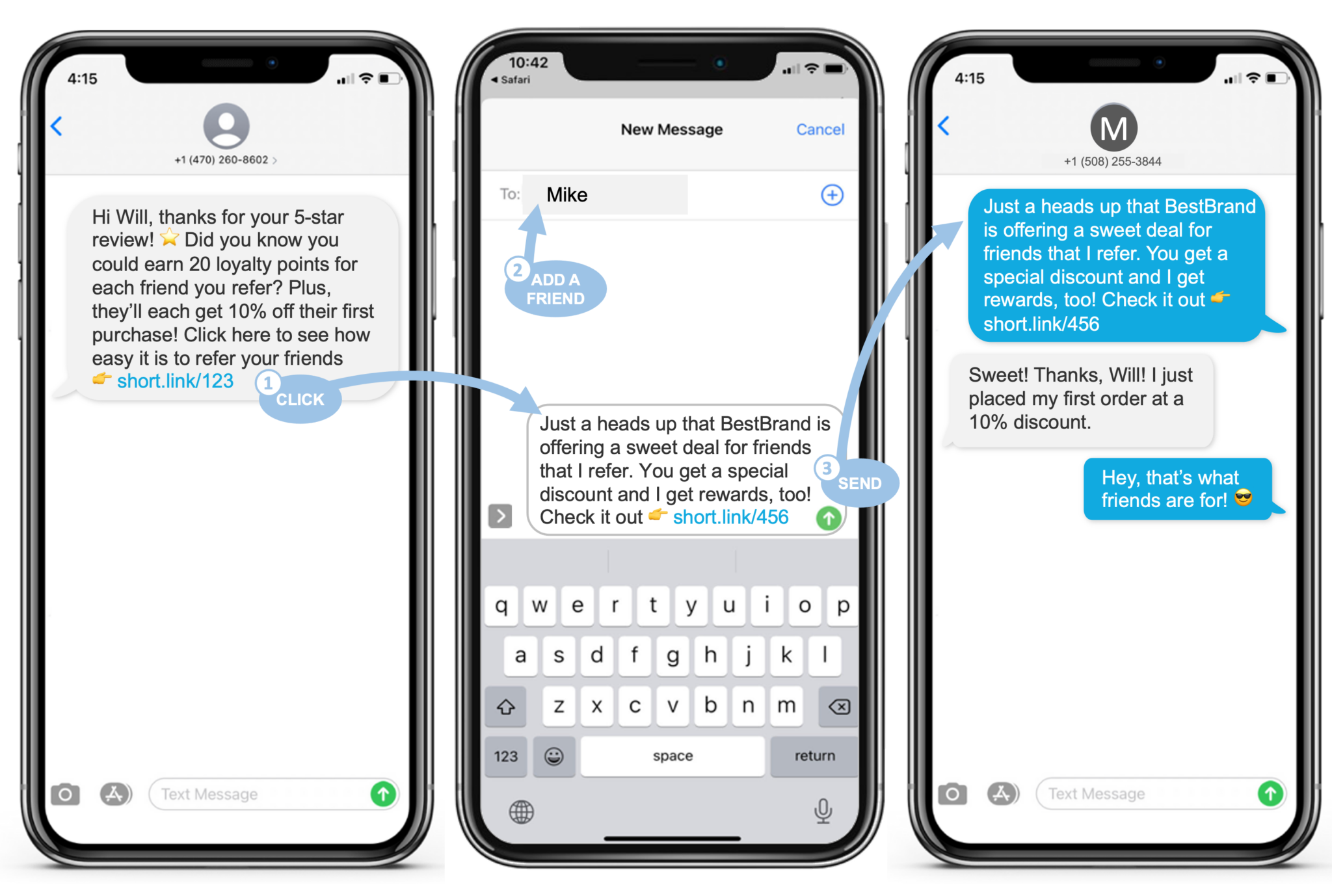Acquiring new customers is expensive and can take a very long time. When you advertise digitally, you’re not only competing with other businesses in your category, but all businesses that serve a similar demographic. This dramatically increases the competition and cost of acquiring a new customer — you spend more just to be visible. And it makes sense to pay this cost as long as new customers spend more than the cost you pay to acquire them — but is that always the case? Retaining customers is a critical part of the recipe, since the cost of customer acquisition is seldom recovered in just one transaction.
Referrals are often the cost-effective way to acquire new customers. Trust is a valuable currency in business, and referrals enable you to leverage all the trust you’ve built with your customers to drive more revenue. Traditionally, this involves incentivizing both the person referring and the person referred. Whether it’s $10 off their next order or a 15% coupon code, referral incentives generate new orders that almost immediately pay for themselves.
Why email referrals don’t work anymore
So what’s the catch? Getting the word out about getting the word out can be difficult. Amidst all the communication about new product launches, upsell offers, and limited-time promotions, referrals take a back seat. And it’s even harder to let people know about these if you’re using email, which only has average open rates of 18% and click-through rates of 2.6%, as your primary channel for communication. Further, the logistics of tracking referrals when administered over email can be hard to address. A typical flow looks something like this:
- Your company sends a referral email with a code to a valuable customer
- The customer gives that code to someone else, who needs to use it at checkout
- The referred customer needs to order using the code, according to its terms
- Your company needs to set up a process for capturing the code and rewarding the referrer
Each of these steps creates an obstacle to running a successful referral program. The referral email might go to spam. The unique referral code might not work right. The referred customer might not use the code for months. There are several outcomes that could A) lead to the loss of a sale, B) upset the referrer or C) taint the experience of a new customer.
The other major pitfall of email is that these referrals happen in divergent mediums. The referral code arrives via email, but it might get communicated via social media or a personal blog. Someone might text the code to another person. The details of the redemption might get lost along the way—a minimum order level or a time frame for redemption. Again, it adds up to frustration when referrals don’t go as-planned.
The bottom line is that referrals work, but the medium — usually email — is lackluster at best. Additionally, abuse in email referral programs is rampant — since most people have more than one email account, they can easily refer themselves and reap the rewards both ways.
Referrals are effective, but running the program over email can be cumbersome and limit the monetary benefits you’d otherwise receive.
Introducing text referrals
First, some quick stats. In 2020, Americans sent 2.2 trillion text messages. 97% of Americans use texting once per day and 90% of all messages sent are read within the first three minutes of being received.
Text messaging is powerful. And it is also the de facto way for people to stay in touch with their friends and family–people they will potentially refer. It only makes sense then to run your referral program over text. But given the moving parts in a referral program, this has been almost impossible—until now.
Voxie offers the industry’s only technology that allows referrals over text. It is deceptively simple:
- You text your existing customers a referral offer. The message contains a referral link.
- When customers click the referral link, Voxie’s proprietary technology opens a new message and populates the body of the message with the referral offer.
- The customer only needs to add their friend’s phone in the contacts box and send the message.
- The person who is referred receives an invitation to join your company’s texting line.
- The system collects information about how many referrals a customer makes and rewards them accordingly.
- It only counts as a referral if the person who the message is sent to ends up joining your texting line – thus preventing misuse of the referral offer.

Referral programs that are run on text have obvious advantages. First, the mode of delivery is more accessible. Instead of getting buried in an inbox, the referral text is seen in real-time. Second, everything happens within the same medium: text messaging. Neither the person referring, nor the person referred have to switch between apps. Finally, the ability to tap a referral link in-chat starts the buyer journey immediately, which results in a quicker sale and a quicker dispersal of the referral bonus.
Referrals keep marketing costs low, conversions high
The power of positive referrals is staggering. Research indicates that customers acquired through referrals have a 37% higher retention rate, and that referrals have a churn rate that’s 18% lower than other forms of marketing. Above all, referred customers are more likely to become repeat customers, netting companies an average of 16% more profit than those acquired through traditional marketing channels.
Combine these tremendous statistics with the high engagement rates of text message marketing and you get a recipe for acquisition marketing that’s supremely effective in bringing in new customers. They say that the best advertising is word-of-mouth, which makes conversational text marketing through Voxie a potential treasure trove of opportunity for brands big and small. Want to explore the powerful potential of conversational SMS, to grow your business and strengthen your brand? Chat with an SMS expert at Voxie today to schedule a demo.
